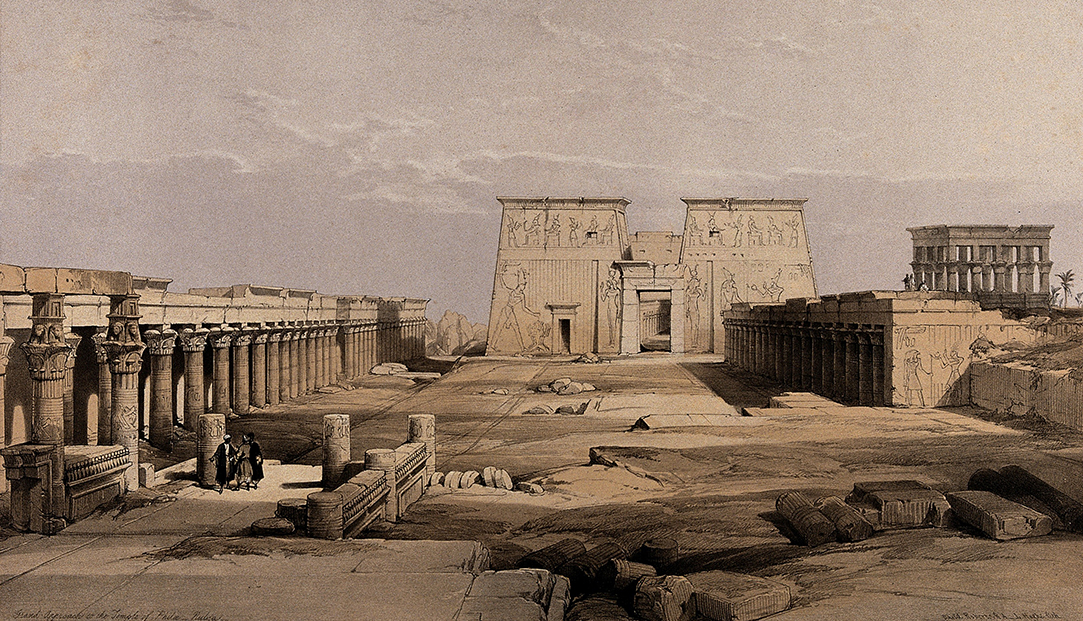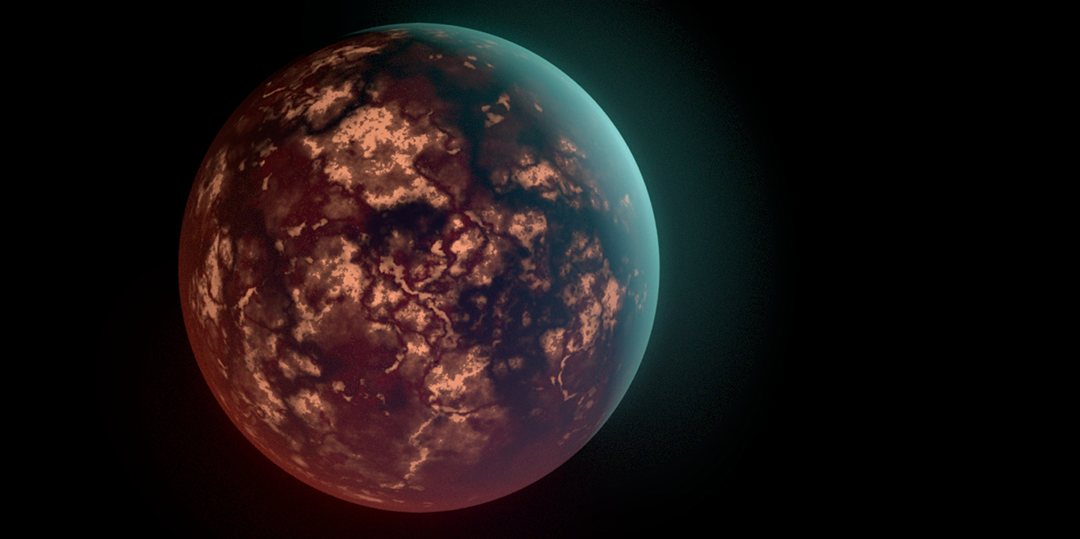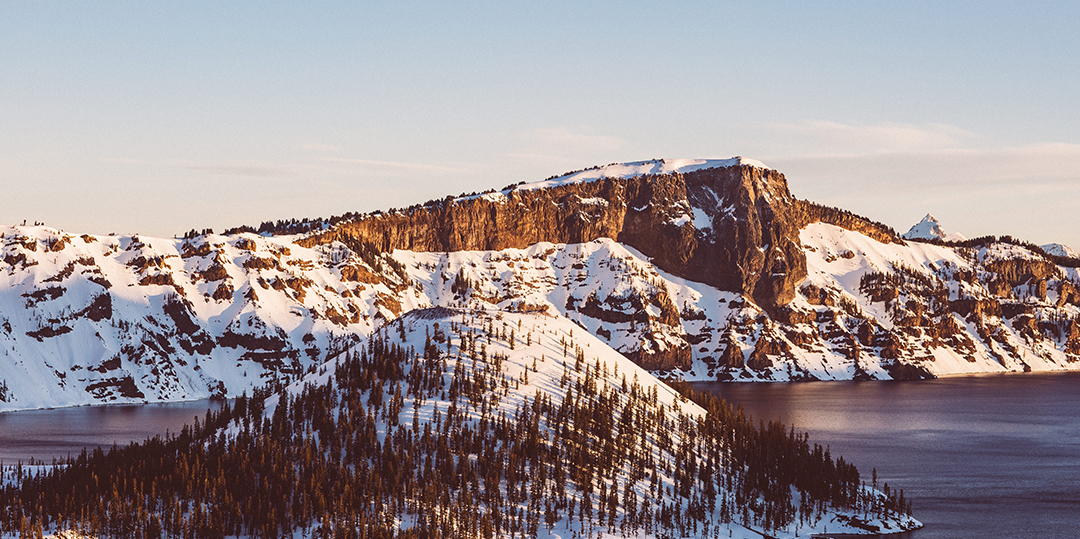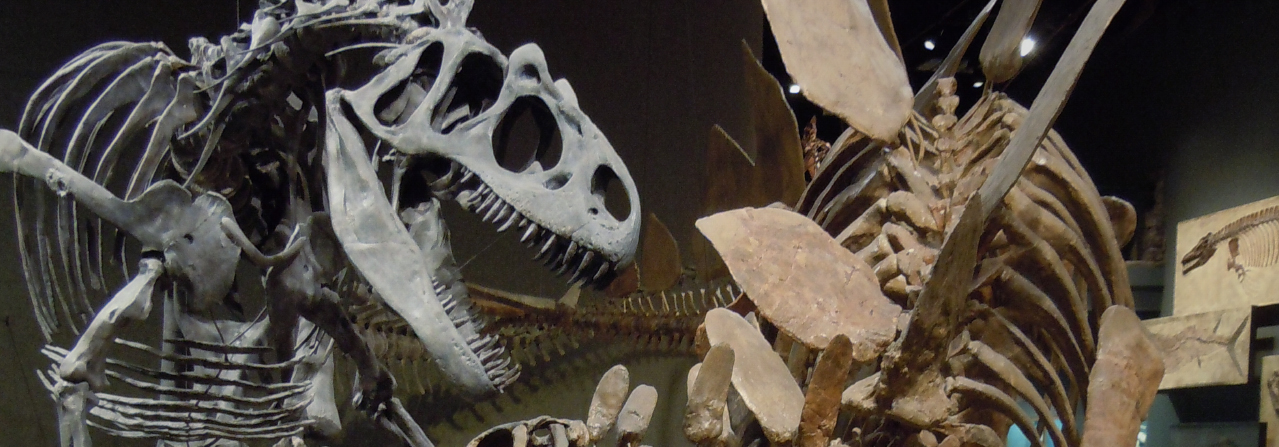
Dinosaurs and the Bible: Should Christians Worry?
Dinosaurs have captivated the world for over a hundred years, fascinating both young and old alike. Gazing upon their bones, many find themselves transported to a wonderful, exotic world far different from our own – a world where, for one brief moment, the reality of science and the excitement of fantasy coexist.
For some, however, the feelings are quite different.
In the Christian community, dinosaurs are often a source of stress and worry – a puzzle piece that can’t quite be placed. Some choose to ignore it. Others, feeling their faith under attack, put themselves through worrisome mental gymnastics to avoid the problem.
How should Christians respond to dinosaurs? Handling the issue, once properly understood, is actually quite straightforward.
Step #1: Separate Fact From Fiction
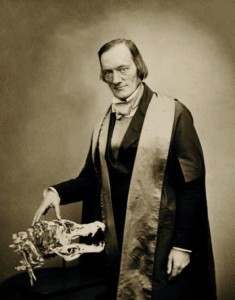
Sir Richard Owen was a prominent English biologist of the 19th Century. He coined the term “Dinosauria” in 1842, a whole seventeen years before Darwin’s theory of evolution was published.
Dinosaurs were real animals.
It is important to make this point upfront, as, over the years, many well-meaning Christians have tried to cast doubt on this, thinking that it somehow weakens Darwinism.
But dinosaurs and Darwinism are not the same thing.
Scientists were studying dinosaurs long before Darwin arrived and will continue to do so long after his influence has gone. In fact, Sir Richard Owen, the man who coined the term “dinosaur,” was an outspoken critic of Darwin!
Today, dinosaurs and Darwinian evolution are so entwined with one another that, to many, separating them seems impossible! Yet one may easily accept the physical reality of dinosaurs without accepting the secular mythology associated with them.
The key is to understand that artifacts (like dinosaur fossils) do not come with labels explaining them. In order to make full sense of fossils, we must first place them into their proper historical context.
Step #2: Remember Your History
We are often told of the many things that science has told us about Earth’s past. In fact, today’s naturalists take great pride in the scientific approach used in their work, but there is a problem:
Natural history is, in fact, a study of history!
At its core, the scientific method relies on being able to make repeated observations about a subject, but this becomes impossible when studying things that have happened in the past.
Bible scholar N.T. Wright explains:
Science studies the repeatable; history studies the unrepeatable. Caesar only crossed the Rubicon once, and if he’d crossed it again it would have meant something different the second time. There was, and could be, only one first landing on the moon. The fall of the second Jerusalem Temple took place in AD 70 and never happened again. Historians don’t see this as a problem and are usually not shy about declaring that these events certainly took place, even though we can’t repeat them in a laboratory.1)
While historians make good use of the scientific method when it comes to examining physical evidence, much of the most significant information comes from testimonial evidence – written or spoken accounts of the past, provided (directly or indirectly) by people who actually lived during those times.
Geologist John Reed:
Testimonial evidence includes abstract concepts that provide a context and define human motivations which are so essential to really understanding the past. Archaeologists can discern the forensic evidence of Rome burning in AD 64, but can never address the likelihood of Nero’s involvement or his motivations. Only careful study of the testimonial evidence can supply the outline of the story. Heinrich Schliemann (1822–1890) found Troy not because he was led to it by artifacts, but because he followed the evidence found in Homer’s written testimony.2)
Testimonial evidence helps historians ensure that their theories and models are based on something more substantial than their own opinions.
Despite this, the study of natural history is practiced, as a rule, without ever once referring to testimonial sources. This is because most of Earth history is considered to be far too old for such evidence to exist.
While the idea of prehistory is common wisdom today, it is actually a fairly recent invention, based more on Enlightenment-era philosophy than hard, scientific proof.
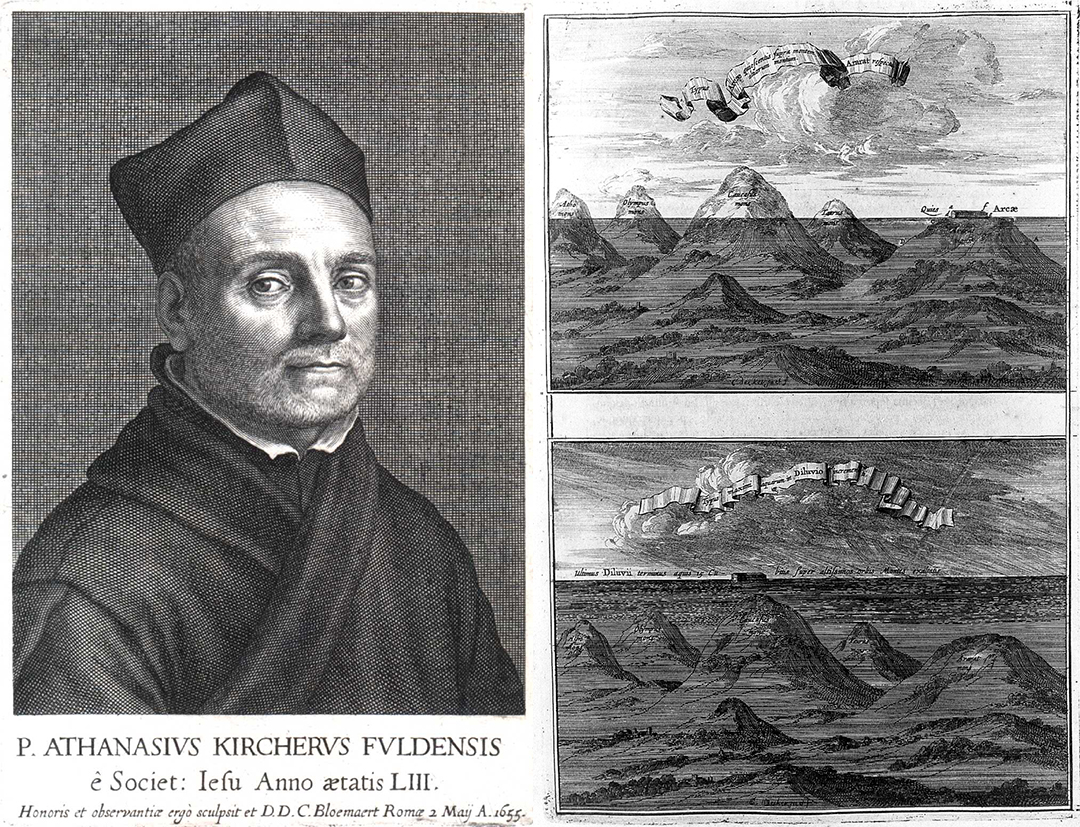
17th century naturalists referred to biblical history as a matter of course. The Jesuit scholar Athanasius Kircher did this famously in his work Arca Noë (“Noah’s Ark,” published in 1674), one of the oldest attempts to scientifically reconstruct the great Flood of Noah. While archaic by today’s standards, Kircher’s work anticipated that of modern creation scientists.
Until the mid 18th Century, geologists and other students of Earth history had no problem invoking testimonial sources, usually biblical, in their work. While a full defense of the Bible’s history is beyond the scope of this article, there is no reason that modern scholars should reject its significance when studying natural history.
The alternative (and the route taken by secular science) is to reconstruct this history blindly, based on what we think should have happened, instead of what the historical record says did happen.
What does this have to do with dinosaurs?
If we are going to separate dinosaurs from their Darwinian background, we must replace it with an alternative history – specifically, one rooted in the historical truth of scripture.
Step #3: Put It All Together
When biblical naturalists study the past, they find it useful to divide history into separate eras and events. Considering the biblical record, we find that the natural history of our planet can be divided into four separate episodes:
- The Creation Event
- The Antediluvian Era (meaning “The era before the flood”)
- The Great Flood (or “The Diluvian Event”)
- The Postdiluvian Era (meaning “The era after the flood”)
While the Bible never specifically mentions dinosaurs (unsurprising, given the word did not exist at the time), we can use clues from the Bible’s history to make sense of the physical evidence for these animals, allowing us to reconstruct their story.
The Creation Event
In the beginning, God created the heavens and the earth. – Genesis 1:1
In the first chapter of Genesis, the Bible describes how God created the universe from nothing.
First, the foundations of the planet were laid: its sky, land, and seas (Genesis 1:1-10). Then, God filled His new creation, creating plants (Gen 1:11-13), the heavenly bodies (Gen 1:14-19), as well as marine and airborne creatures (Gen 1:20-23).
It was not until the sixth and final day of creation that God made mankind and all of the land animals:
And God said, “Let the earth bring forth living creatures according to their kinds—livestock and creeping things and beasts of the earth according to their kinds.” And it was so. And God made the beasts of the earth according to their kinds and the livestock according to their kinds, and everything that creeps on the ground according to its kind. And God saw that it was good. – Genesis 1:24-25
While it is common to see creatures like plesiosaurs and pterosaurs described as “swimming” or “flying dinosaurs,” this is not correct. Dinosaurs were, as a rule, land-dwelling animals and would therefore have appeared on this sixth day of creation.
These, however, would not have been the dinosaurs that we see today in museums and textbooks.
While all of the major groups of dinosaurs would have existed from the beginning, they would, at first, be represented by only a handful of plant eating species.
And God said, “Behold, I have given you every plant yielding seed that is on the face of all the earth, and every tree with seed in its fruit. You shall have them for food. And to every beast of the earth and to every bird of the heavens and to everything that creeps on the earth, everything that has the breath of life, I have given every green plant for food.” And it was so. – Genesis 1:29-30
Originally, all animals, including dinosaurs, were herbivores. This would mean that even the fearsome tyrannosaurs would have begun their reign as gentle browsers, likely feeding on fruits, nuts, and other tough plant matter, as modern crocodiles are occasionally known to do3).
Although we do not have fossils of these early species, this is expected, as the majority of the world’s fossils would not form until The Great Flood, many hundreds of years later.
The Antediluvian Era
Thus the heavens and the earth were finished, and all the host of them – Genesis 2:1
Several lines of evidence, both physical and historical, suggest that, before the flood, most of the Earth’s continents were joined together into one giant landmass.
Fossil evidence suggests that dinosaurs lived in the lower regions of this pre-flood supercontinent, far away from mammal-dominated ecosystems and, as a result, from mankind.
This is in stark contrast to early Creationist illustrations, which often portrayed pre-flood man living quite casually with dinosaurs, using them to plow their fields, etc. Such images are unrealistic to say the least. It is far more likely that man and dinosaurs coexisted similarly to how we coexist with large, potentially dangerous animals today: occasionally interacting, but keeping our distance where possible.
There were good reasons to keep this distance, as the idyllic conditions of Eden did not last long after the Fall.
Now the earth was corrupt in God’s sight, and the earth was filled with violence. And God saw the earth, and behold, it was corrupt, for all flesh had corrupted their way on the earth. – Genesis 6:11-12
Unlike their ancestors, many dinosaurs adopted carnivorous lifestyles during the centuries between Eden and the flood, developing into infamous super predators like Tyrannosaurus rex.
Dinosaurs would undergo many changes over the centuries between Creation and the Flood.
At the dawn of the Antediluvian, dinosaurs were represented by a mere 50-90 different species (each divinely created by God)4). Dinosaurs diversified rapidly, though, and, by the end of the Antediluvian, this number had risen to more than 500!5) (see footnote)
The Great Flood
For behold, I will bring a flood of waters upon the earth to destroy all flesh in which is the breath of life under heaven. Everything that is on the earth shall die– Genesis 6:17
The Great Flood is responsible for the vast majority of our fossil record. However, dinosaurs do not appear in the earliest rocks from this catastrophe.
Dinosaurs survived the early stages of the flood, as the waters overwhelmed the shallow sea beds and low-lying coastal regions. It was not until the mid to late Inundatory Stage of the Flood that the flood waters began to finally overtake them6).
By the end of the Flood, almost all of the dinosaurs had been wiped out, their incredible diversity reduced to the 50-90 species that would have been preserved on the ark.
The Postdiluvian Era
“I establish my covenant with you, that never again shall all flesh be cut off by the waters of the flood, and never again shall there be a flood to destroy the earth.” – Genesis 9:11
The first challenge that dinosaurs exiting the ark would face was finding food while the world’s ecosystems recovered.
Plant eating dinosaurs would have been able to take advantage of the plentiful amounts of flotsam (stranded vegetation) left behind from the Flood, as well as the fast-growing grasses that likely dominated the early Postdiluvian landscape.7)
Meat eaters would be able to survive either by eating fish or by digging up and consuming the morbidly large quantities of carrion (dead bodies) that covered the Earth’s surface at this time.8) With so many easily to obtain sources of meat available, early post flood predators would have had little, if any reason to hunt other animals.
Leaving the ark, dinosaurs would have made use of the unique, early Postdiluvian climate to recolonize the land. Warm ocean currents circulating along the continents would have created unusually warm and regular conditions along the coasts, even at high latitudes.9)
This, along with massive natural “rafts,” formed from trees that were ripped up during the flood, would have opened up pathways for migration, allowing dinosaurs to reach latitudes as high as Scandinavia and longitudes as far as the Americas.
Eventually, these at first favorable conditions would result in the great Postdiluvian Ice Age10), restricting further migration in the far North and South, which would be blanketed in heavy snowfall.
By the Ice Age’s peak, about five-hundred years after the Flood, the world would have become a much cooler and drier place.11)
Ultimately, dinosaurs would be driven to extinction by a combination of climate change and human hunting (although the former was likely a much greater influence than the latter).
Conclusion
Dinosaurs have left a profound impact on our world.
Although they died long ago, they live on in our imaginations, through the story told by their bones.
Hundreds of years of evolutionary teaching have led many Christians to view this story as an attack on their faith. With no clear way to reconcile the history of scripture with the history of science, many have been left at a loss as to how to think about these strange, yet wonderful creatures.
But, when we separate these animals from the secular mythology and allow the historical record of scripture to guide our interpretation of the facts, we see that a very different story emerges. Not a story of blind, godless evolution, but of a beautiful creation, spoiled (and ultimately destroyed) by the evils of sin.
Featured Image: An allosaurus menaces a stegosaurus in this display from the Denver Museum of Nature and Science. Source
References
| ↑1 | Wright, N.T., Surprised by Hope: Rethinking Heaven, the Resurrection, and the Mission of the Church, pp. 64–65, HarperOne, NY, 2008. |
|---|---|
| ↑2 | Reed, John K. “Cuvier’s Analogy and Its Consequences: Forensics vs Testimony as Historical Evidence.” Journal of Creation 23, no. 3 (December 2008): 115-20. |
| ↑3 | Platt, S. G., Elsey, R. M., Liu, H., Rainwater, T. R., Nifong, J. C., Rosenblatt, A. E., Heithaus, M. R. and Mazzotti, F. J. (2013), Frugivory and seed dispersal by crocodilians: an overlooked form of saurochory?. J Zool, 291: 87–99. doi:10.1111/jzo.12052 |
| ↑4 | “The Ark’s Dinosaurs.” Answers in Genesis. Accessed September 11, 2016. https://answersingenesis.org/dinosaurs/when-did-dinosaurs-live/arks-dinosaurs/. |
| ↑5 | The idea of one parent species dividing into multiple child species is not the same as Darwinian evolution. Both natural selection and speciation are real, observable processes, but involve pre-existing genetic information being sorted and, ultimately, reduced. This is the opposite of what is required by the Theory of Common Descent. |
| ↑6 | Clarey, Tim. “The Real Story of Dinosaurs.” In Dinosaurs: Marvels of God’s Design. Green Forest, AZ: Master Books, 2015. |
| ↑7, ↑8 | Woodmorappe, John. “Food Sources in the “Barren” Post-Flood World.” In Noah’s Ark: A Feasibility Study. Dallas, TX: Institute for Creation Research, 1996-2014. |
| ↑9 | Snelling, Andrew A. “The Post-Flood World.” In Earth’s Catastrophic Past. Vol. 2. Dallas, TX: Institute for Creation Research, 2009. |
| ↑10 | Oard, Michael. “The Genesis Flood Caused the Ice Age.” In Frozen In Time. Green Forest, AZ: Master Books, 2004. |
| ↑11 | Snelling, Andrew A. “The Post-Flood World.” In Earth’s Catastrophic Past. Vol. 2. Dallas, TX: Institute for Creation Research, 2009. |

